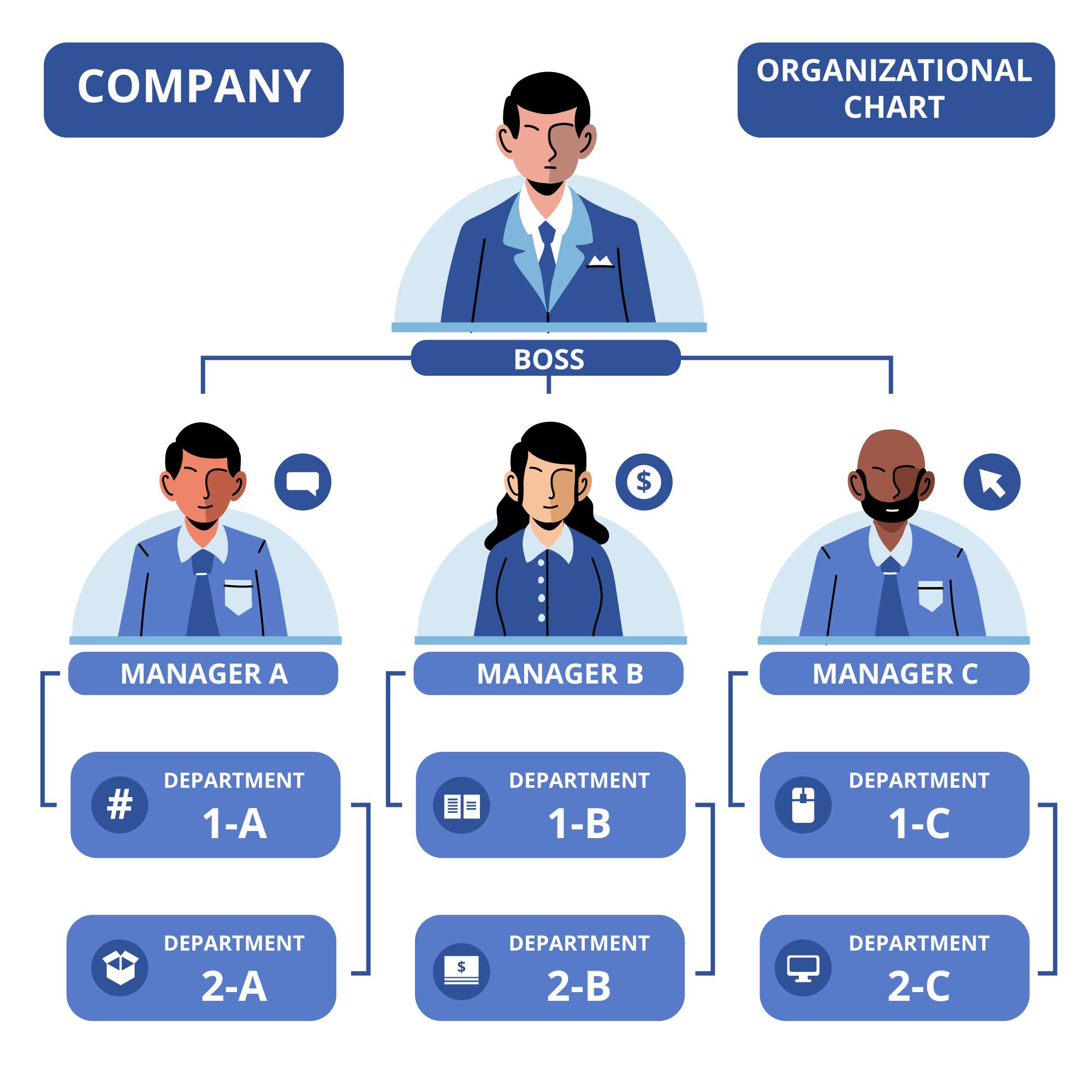Managers in business organizations need to continuously receive information from lower levels to track work progress, understand the achievement levels of planned actions, and strategize in response to challenges. The communication channel responsible for conveying information upward is called upward communication.
Learn Upward Communication
What is Upward Communication?
Upward communication is the vertical flow of communication from a lower level to one or more higher levels in the organization. Upward communication travels from subordinates to superiors and ascends the organizational hierarchy.
Upper managers require information on production performance, marketing data, financial metrics, and the thoughts of lower-level employees. Subordinates convey this information to upper-level managers through upward communication channels.
Upward Communication follows the organizational hierarchy, chain of command, and structure.

5 Categories of Information Disseminated Through Upward Communication
Planty and Mahcaver (1952) mentioned the following categories of information generally pass through the upward channel of communication:
- Progress of current work projects.
- Serious unsolved problems and situations in which subordinates need help from superiors.
- New developments arising within or affecting the work unit or organization
- Suggestions for improvements and innovations.
- Employee attitudes, morale, and efficiency.
7 Advantages of Upward Communication
Upward communication is acknowledged as a vital tool for effective and systematic organizational management. The reasons for its importance are outlined below:
Getting Feedback
Upward communication enables upper managers to receive essential feedback from subordinates regarding events at lower organizational levels. It helps assess whether directives issued to lower staff have been correctly understood and implemented.
Additionally, it provides valuable insights into employee perceptions of the organization and its policies.
Venting Emotions
Upward communication allows employees to express their problems, grievances, discontent, or reactions to upper-level managers. This enables managers to address issues promptly and find satisfactory solutions. Even if immediate solutions are not provided, employees can find relief by expressing their concerns.
Receiving Constructive Suggestions
Managers often need suggestions from subordinates to address various organizational challenges. Collaborative problem-solving is often more effective than individual efforts.
Therefore, managers benefit from receiving suggestions from subordinates for problem resolution or identifying the best opportunities for the organization. Upward communication serves as the conduit for conveying such suggestions to upper-level managers.
Decision-Making
Upward communication provides managers with information on ongoing work, suggestions, opinions, employee morale, and attitudes. This facilitates informed decision-making and can help managers arrive at decisions that are acceptable to employees.
Employee Motivation
Upward communication allows subordinates to express their feelings to upper-level managers, providing them with a sense of satisfaction. As a result, upward communication serves as a powerful motivator for employees.
Enhancing Harmony and Cohesion
Upward communication fosters harmonious and cohesive relationships between management and employees, creating a congenial and cordial organizational environment.
Generating Innovative Ideas
Upward communication channels provide organizations with innovative ideas from subordinates and front-line employees related to improving work methods and product redesign.
In some cases, initiatives like Quality Control Circles (QC Circles) in Japan have effectively harnessed upward communication to achieve breakthroughs in productivity.
4 Disadvantages of Upward Communication
Upward communication is subject to several limitations that can pose challenges in certain cases. The disadvantages of upward communication are discussed below:
Distortion
Upward communication is highly susceptible to distortion. People often hesitate to convey unfavorable facts or information. Consequently, lower-level employees may filter or withhold unpleasant facts, editing the communication before it reaches upper-level managers.
This can result in upper management receiving incomplete or inaccurate information, leading to flawed or inappropriate decision-making and organizational inefficiency.
Neglect
Upper-level managers may sometimes neglect or ignore upward communication, failing to provide any response or acknowledgment to the sender. This lack of feedback can frustrate lower-level employees, discouraging them from engaging in upward communication in the future.
Flattery
Upward communication may lose its effectiveness when it includes unnecessary flattery of superiors. Lower-level employees might engage in flattery to gain favor with their bosses. However, this can lead superiors to form biased opinions and draw incorrect conclusions about individuals or situations. Such bias can impact fair performance appraisals and decision-making.
Fear of Inefficiency
Subordinates may fear that communicating their problems to superiors will reflect negatively on their own efficiency and competence. This fear can deter employees from engaging in upward communication, as they worry about potential repercussions on their career and professional image.
5 Reasons for Distortion in Upward Communication
Upward communication can become distorted for several reasons:
Lack of Trust in Superiors
When employees do not trust their superiors to handle unfavorable information appropriately, they may withhold such information or present it in a more favorable light. This lack of trust can lead to distorted communication.
To address this, superiors should demonstrate that feedback is used constructively for improvement rather than punishment.
Boss’s Influence on Career
Subordinates often fear the influence their boss has over their career progression. This fear can compel employees to distort facts in a way that portrays them more favorably to secure their boss’s approval and safeguard their career prospects.
Personal Interests
Some employees may distort information to serve their personal interests, seeking additional benefits or advantages to which they are not entitled. This deliberate distortion is driven by a desire to cultivate a more favorable image within the organization.
Fear of Image Loss
Subordinates may distort facts in upward communication to avoid tarnishing their established positive image within the organization. When employees have built a strong performance reputation and face a situation that threatens it, they may attempt to conceal unfavorable facts to preserve their image temporarily.
Lack of Encouragement from Superiors
Managers play a crucial role in encouraging regular and candid upward communication. When managers fail to provide adequate support and encouragement, subordinates may become reluctant and less diligent in their communication, ultimately resulting in information distortion.
8 Forms or Methods of Upward Communication
There are various forms of upward communication utilized in business organizations, with the most popular methods discussed below:
One-to-One Meeting
Subordinates have individual face-to-face meetings with their immediate or higher-level supervisors. This form of upward communication provides a personal and confidential environment for sharing intimate information.
Report
Employees may be required to submit reports detailing work progress or any relevant matters within their jurisdiction.
Memo
Subordinates are sometimes tasked with preparing concise information sheets summarizing events that have occurred at lower organizational levels. These are commonly referred to as memos.
Suggestion Scheme
This form of upward communication encourages subordinates to submit suggestions for potential improvements in operational methods, ultimately enhancing organizational efficiency.
Grievance Procedure
The grievance procedure allows employees to express their opinions, discontent, or dissatisfaction regarding any management actions that affect their interests. This form of upward communication provides an outlet for employees to voice their concerns.
Staff Meeting
Staff meetings provide employees with an opportunity to exchange opinions with their superiors, facilitating upward communication within the organization.
Open-door Policy
Under an open-door policy, employees are made to feel that their managers’ doors are always open to them. They can walk into their manager’s office at any time without hesitation to discuss any problems or concerns.
Exit Interview
Exit interviews serve as a form of upward communication aimed at understanding the reasons behind an employee’s decision to leave the organization.
5 Ways to Improve Upward Communication
Upward communication plays an essential role in every business organization. As previously discussed, it provides a vital tool for planning and controlling the enterprise’s operations.
Therefore, it is crucial to maintain effective upward communication in every business organization. The following are ways to make it effective and operational:
Encouragement
Managers at higher levels should actively encourage subordinate employees to communicate freely about any aspect of their performance, sentiments, opinions, or suggestions.
They should pay proper attention to upward communication and provide regular feedback to their subordinates. This will motivate subordinates to communicate enthusiastically.
Trust Building
Upper-level managers should take appropriate measures to build trust and confidence in the minds of subordinates regarding their superiors.
Fair treatment, showing respect for employees’ opinions, implementing valid suggestions, recognizing their contributions, publicly acknowledging their achievements, and refraining from taking negative actions against critical opinions of subordinates can motivate lower-level employees to engage in truthful and fair upward communication.
Special Programs
Top-level managers should plan and implement special communication systems, such as grievance handling systems, regular meetings, suggestion boxes, reward schemes for constructive suggestions, etc. These programs will encourage subordinates to communicate with utmost good faith and honesty.
Informal Gatherings
Regularly organizing informal gatherings also creates a favorable environment for upward communication.
People feel free and develop closer relationships with their superiors, removing fear and distance barriers. Lower-level employees are more likely to be encouraged to engage in upward communication under such circumstances.
Participative Management Style
Introducing and practicing a participative management style allows subordinates to participate in decision-making, share information with superiors, and contribute their ideas and thoughts to plan and solve organizational problems.
This approach exposes and utilizes subordinates’ creative abilities for the organization’s benefit through upward communication.
Conclusion
Upward communication is a process where subordinates share performance reports, feedback, concerns, and suggestions with their superiors. It helps foster a sense of belonging among employees, allows them to participate in decision-making, and serves as a feedback mechanism for managers to make informed decisions.
Trust is crucial for effective upward communication, and organizations use methods such as suggestion boxes, surveys, and face-to-face interactions to encourage it.
Upward communication supports continuous improvement, resolves conflicts, and promotes organizational efficiency.
What is the main purpose of upward communication?
The main purpose of upward communication is to provide feedback to higher-ups, inform them of progress toward goals, and relay challenges on several areas of organizational functioning.
What types of messages are typically conveyed through upward communication?
Upward communication typically conveys messages such as personal reports of performance, problems, or concerns, reports about co-workers, reactions to organizational policies and practices, and suggestions about required tasks and how they can be achieved.
Why is upward communication important for both managers and employees?
For managers, upward communication keeps them aware of employees’ feelings, facilitates sound decision-making, and collects ideas for improvement. For employees, it promotes a sense of dignity, provides an avenue to express feelings, and facilitates involvement in the decision-making process.
How can organizations facilitate upward communication?
Organizations can facilitate upward communication by implementing structures such as employee suggestion boxes, employee surveys, and encouraging face-to-face conversations between subordinates and their superiors.
Why might upward communication be particularly challenging in larger organizations?
In larger organizations, relationships tend to be more formalized, and managers often have expanded job responsibilities, making them appear unapproachable and leading to difficulties in achieving open and honest upward communication.
How does upward communication contribute to an employee’s sense of belonging in an organization?
Upward communication allows employees to express their true feelings, participate in decision-making processes, and communicate their receptiveness to messages, thereby promoting a sense of dignity, importance, and stake in the organization.
How does upward communication aid in sound decision-making within an organization?
Upward communication provides managers with insights into employees’ feelings about their jobs, co-workers, and the organization, collects ideas for improvement, and helps the organization understand employees’ accomplishments, challenges, and attitudes, thereby supporting informed and sound decision-making.
Source
Provided by iedunote: https://www.iedunote.com/

